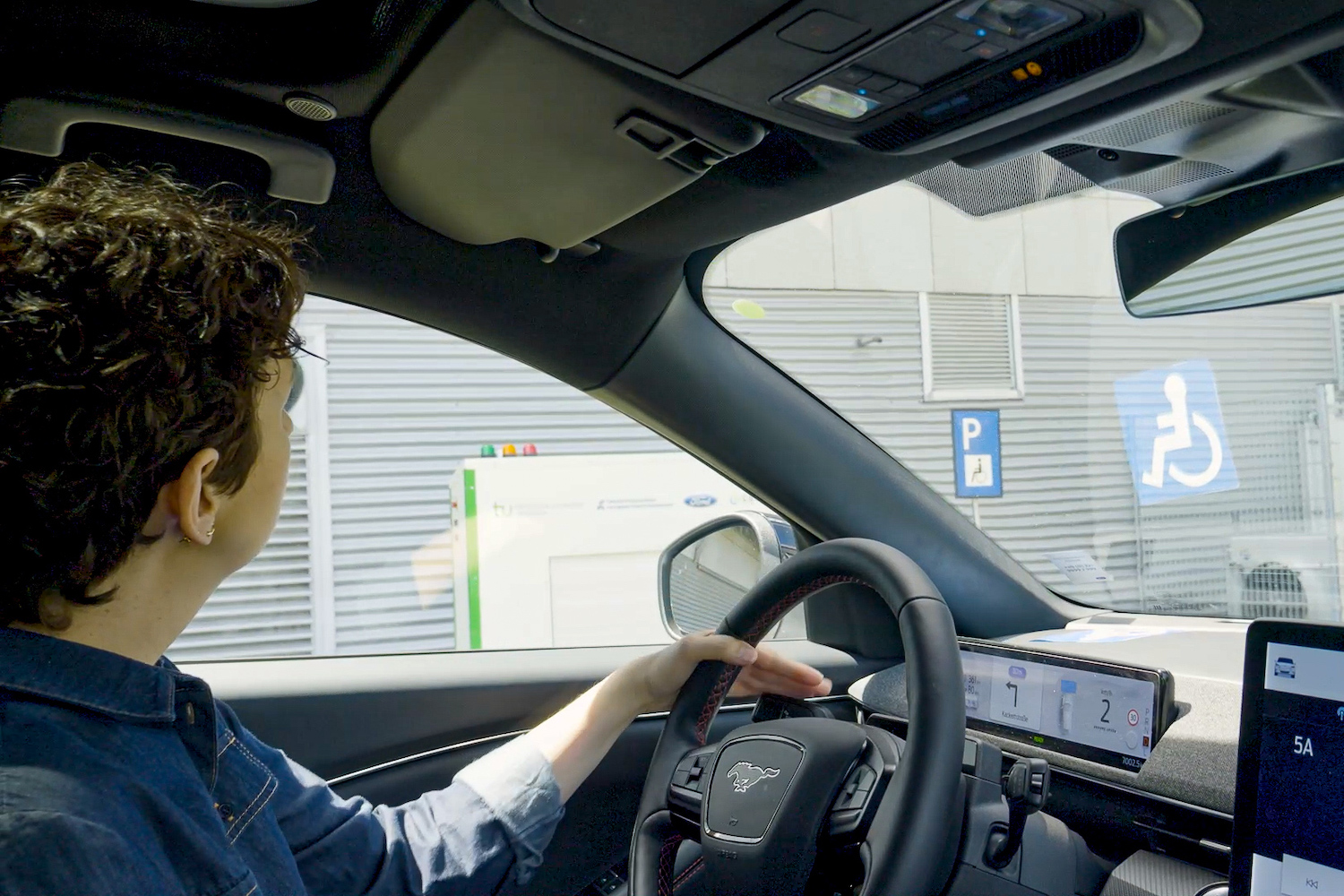Ford has begun real-world trials of a new robotic charging system for electric vehicles, which could, it says, make driving an EV lot easier for disabled drivers.
Difficulty with charging, Ford said, has been identified as a huge disincentive for disabled drivers against buying an electric vehicle, with a UK study last year finding that only 25 per cent of disabled drivers would agree to consider switching to an EV now, compared to 61 per cent if charging was made more accessible.
How does the system work?
Once an EV is driven up to a charging station, the system is activated using the FordPass smartphone app, which causes a cover on the charger to slide open and an arm to extend toward the vehicle's charging port. Guided by a camera, the arm then connects with the vehicle's charging port, with the driver able to either stay inside the car or go elsewhere while the charging takes place, monitoring the progress of the procedure via the app.
Ford said that the robotic charging station such as the one currently on trial in Germany could be installed in disabled parking spaces, in car parks or in private homes. As well as a tool to help disabled drivers, however, the company also sees other uses for it, including as a way to make recharging of company fleets faster and more efficient, with even the possibility well into the future of driverless cars able to travel to a robotic charger, fill-up and return to their owners.
Following the current trial, Ford will launch another trial in partnership with the rapid-charging company, Ionity, to look at ways to improve and refine the technology.
"Ford is committed to ensuring freedom of movement and right now refuelling or charging your vehicle can be a major problem for some drivers," said Birger Fricke, a research engineer at Ford of Europe. "The robot charging station could be an added convenience for some people but - absolutely essential for others."
Hurdles for disabled drivers
At present, in Ireland, the number of disabled-accessible public chargers is minuscule, with just four in the entire country according to reports from last year. Four more are planned for opening next year, which would bring the figure to a still paltry eight, a figure which matters given the difficulties that disabled drivers face compared to able-bodied drivers.
The same UK study by the Research Institute for Disabled Consumers, which found that charging hurdles acted as a disincentive for disabled drivers against the adoption of electric vehicles, also looked at some of the specific ways in which disabled drivers felt that poorly designed charging stations would cause them difficulty.
Of the survey's respondents, 54 per cent felt that lifting the charging cable from the boot and having to then close it would either be difficult or very difficult to do; 41 per cent felt that manoeuvring the cable to the charge point would also be difficult or very difficult to do, while 66 per cent said that space or trip hazards and barriers around the car and charger would either be difficult or very difficult to navigate.
Respondents also said that connection points on chargers were often far too high for a wheelchair user and expressed concerns about being able to manage to connect a heavy cable.
Creating greater levels of independence
Some of the solutions put forward by participants include a built-in retractable cable in the car or charge unit, ensuring that the position of the charge flap is accessible and ensuring clear wheelchair access from the car to the charge point. Ford has sought to address at least some of these solutions in its latest trial.
"I stopped filling up my car myself years ago, because it became very strenuous," said Angela Aben, a Ford employee who also uses a motorised wheelchair. "My husband does it for me. The introduction of a robot charging station would offer me a much greater level of independence."





